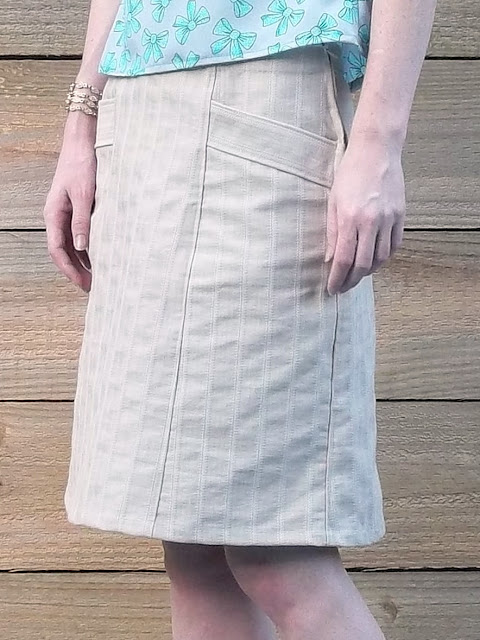Me Made May time! My pledge, as the last few years, is to wear me mades every day this month. And I also plan to get back on track with blogging by posting anything I wear that I haven't yet posted. To start with is my newest make, finished just yesterday.
Both the top and pants are from Papercut Patterns. I've made quite a few of their patterns and really like them. For me, I find there are very few adjustments I need to make, and the instructions tend to be fairly simple and clear.
The pants are the Peter and the Wolf pattern, which is now sadly out of print. I've had the pattern for a few years after picking it up for $10 at The Fabric Store. However, pants are daunting to make, and these pants have what looks like complicated piecing so I had put them to the side as too hard for now. But pants are the one clothing item where I still own a lot of store bought clothes, so I'm trying to make a concerted effort to replace them with my own creations.
The legs have two front and back pieces, angled pockets, front insets, back yoke, a waistband and even facings for the curved hems. This number of different parts is honestly huge for a pair of pants. I really shouldn't have been so daunted, because this pattern was amazingly straightforward.
The fabric is a lovely mid-weight mid-stretch cotton sateen with a moderate sheen from The Fabric Store. The pattern envelope version is made in a neutral grey with satin for the pockets, yoke and front insets so they stand out. As these are pants for work I didn't want to do something too out there, so opted to use the reverse side of the fabric. Rather than showing up as different colours, it just works to highlight the construction of the pants. Each seam is also topstitched, which also helps to show off the creative shape of the pattern.
These pants weren't hard to sew. I found the pattern stepped out the process for making very well, and the legs having centre and side pattern pieces suits the skinny fit. I didn't do any adjustments, but I'd think it wouldn't be too hard to make any changes needed to fix the fit. Hemming the pants was a bit harder, as the point at the front is difficult to make sharp. Because my thread was black and the fabric is black I wanted to be careful not to cut through the stitching line, so when I turned the facings inside I wasn't able to get the point as pointy they should be, but the shape is pretty close to what it's meant to be.
The top is adapted from the bodice of the Adrift Dress. I've made the dress before and found it a bit short, particularly in the bodice, so I lengthened it for this top. As I've made the dress before and it's a simple shape. The fabric is a bamboo jersey from Tessuti in a rich royal blue. It's beautifully soft, and was very easy to sew up.
I'm extremely happy with both these makes. I've already been wearing the top for a few months, and the pants are certain to be a favourite and a pattern to make again.





















































